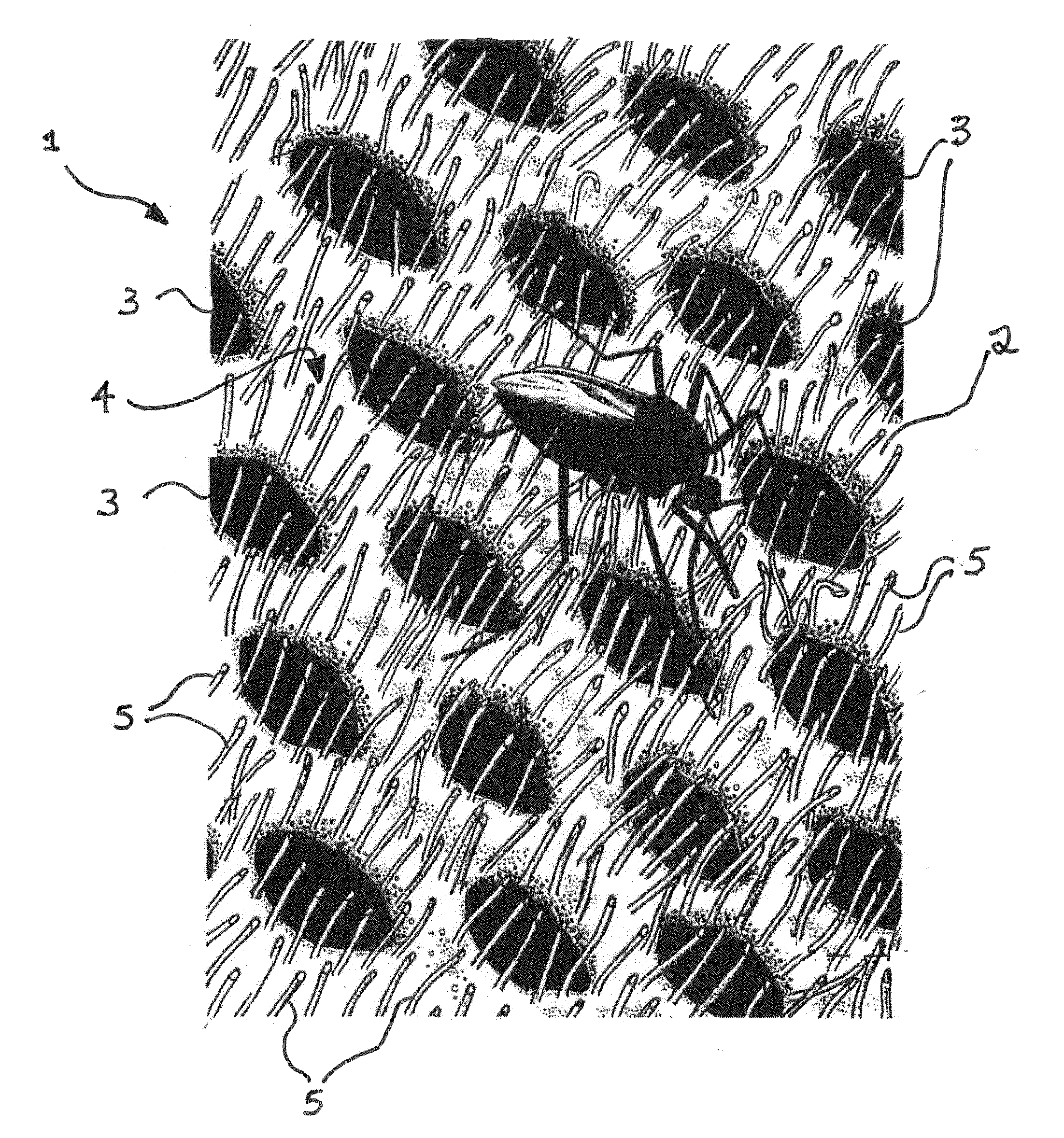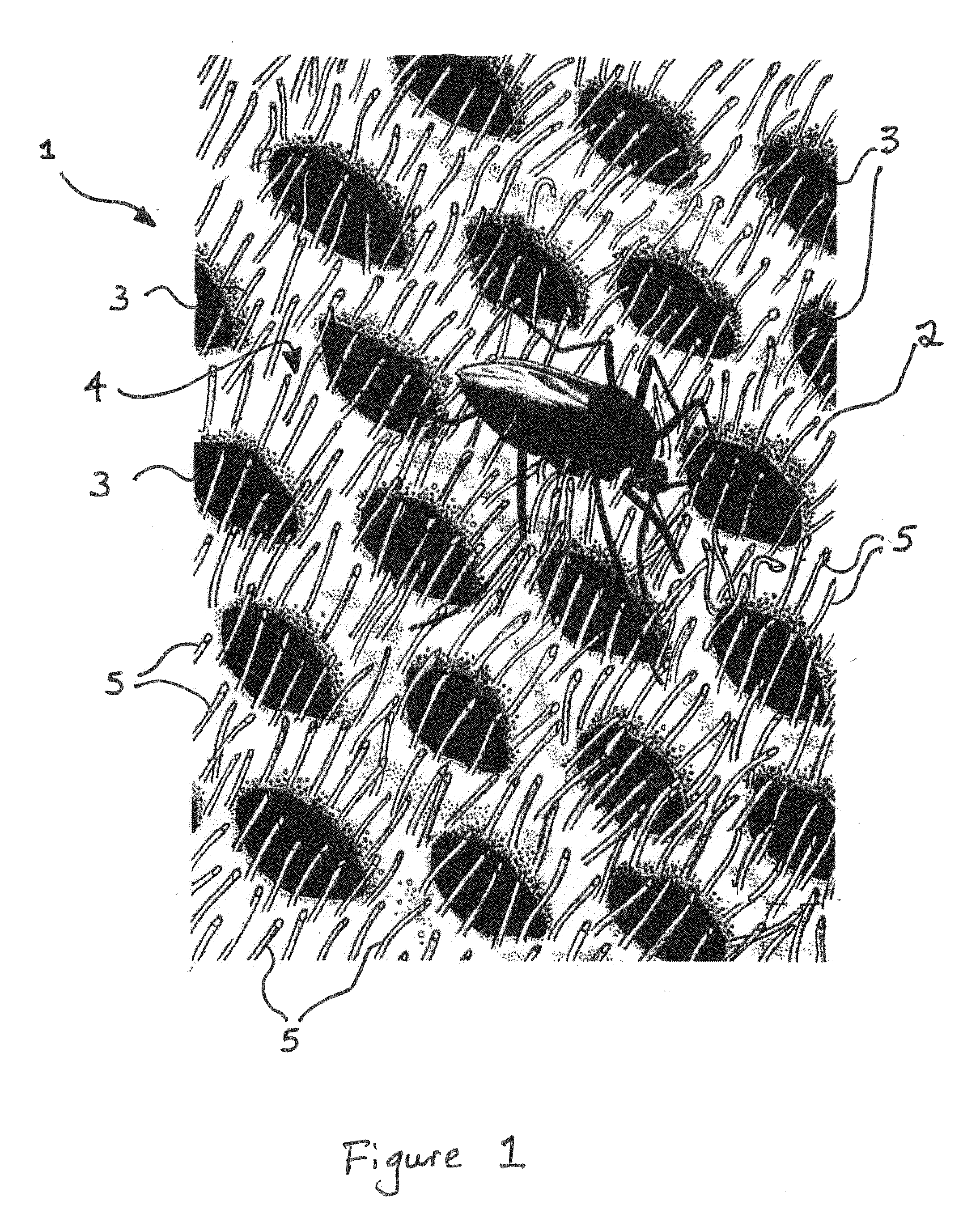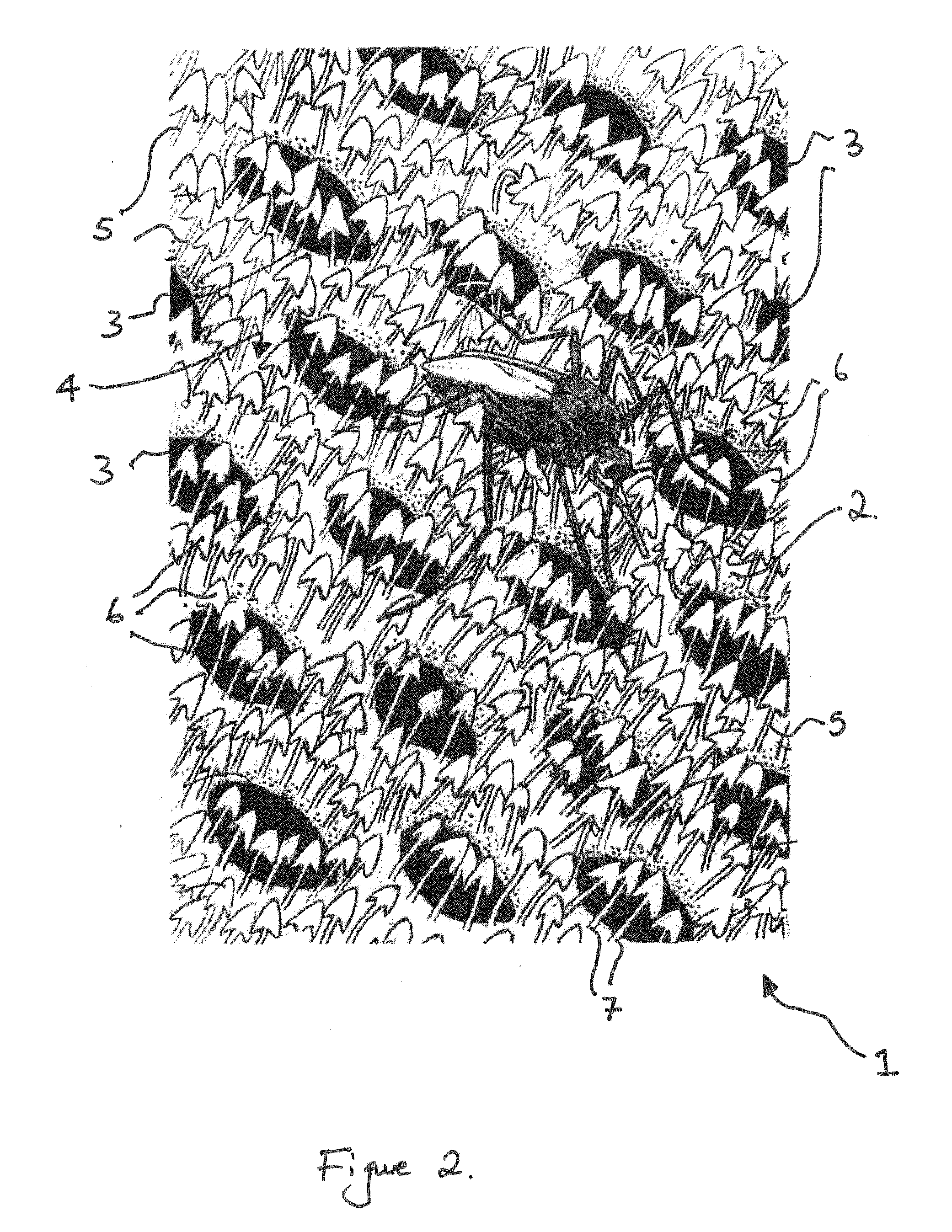Pest control materials
a technology of materials and pests, applied in the field of materials, can solve the problems of rapid death, and achieve the effects of reducing insecticidal contact, facilitating direct mechanical interaction and abrasion, and valuable time and energy
- Summary
- Abstract
- Description
- Claims
- Application Information
AI Technical Summary
Benefits of technology
Problems solved by technology
Method used
Image
Examples
example 2
[0085]An open mesh structure according to the invention was prepared via a split spacer fabric using the following general methods:
[0086]The base fabric, prepared by known methods, was a planar split warp knitted spacer mesh fabric produced from monofilament yarns (PET): 10 mm thickness. The area density of the unslit warp knitted spacer mesh was ca. 280-320 g / m2 and the exact weight selected depending on the required aperture size. The surface filaments were selected from 75 dtex or 167dtex textured PET) although other linear densities can be utilised depending on the required area density of the resulting material.
[0087]The projection filaments were 0.07 mm PET monofilament. Other dimensions may be selected depending on the stiffness and compression characteristics of the projecting filaments required in the final product after slitting.
[0088]The slitting of the spacer fabric takes place in-plane down the centre of the mesh fabric. After slitting the resulting open mesh material w...
PUM
 Login to View More
Login to View More Abstract
Description
Claims
Application Information
 Login to View More
Login to View More - R&D
- Intellectual Property
- Life Sciences
- Materials
- Tech Scout
- Unparalleled Data Quality
- Higher Quality Content
- 60% Fewer Hallucinations
Browse by: Latest US Patents, China's latest patents, Technical Efficacy Thesaurus, Application Domain, Technology Topic, Popular Technical Reports.
© 2025 PatSnap. All rights reserved.Legal|Privacy policy|Modern Slavery Act Transparency Statement|Sitemap|About US| Contact US: help@patsnap.com



